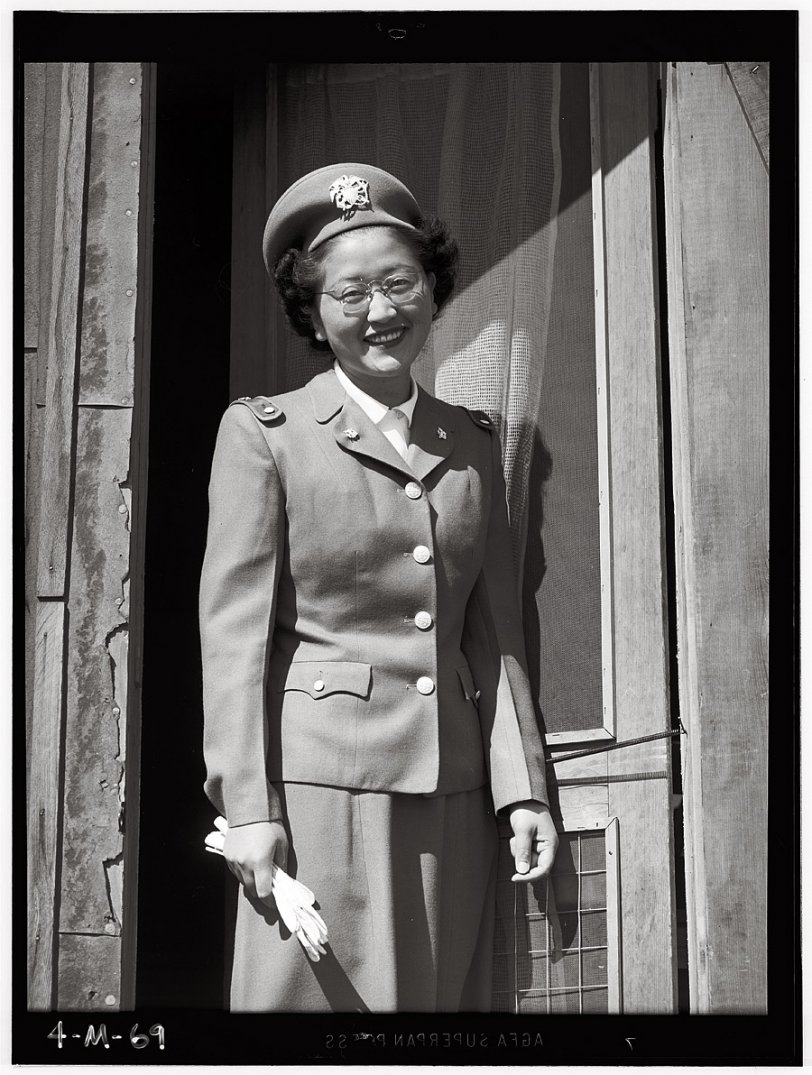


Framed or unframed, desk size to sofa size, printed by us in Arizona and Alabama since 2007. Explore now.
Shorpy is funded by you. Patreon contributors get an ad-free experience.
Learn more.

- Lofty addition
- In 1912
- Keenan Building
- Six years old
- Taken from the P.J. McArdle Roadway?
- It stood only 47 years
- Three track mind
- Incline to the right
- Reach for the sky, 1912 style
- No clean sweep
- Same Job Title, Same Face
- Sadly Lost
- Beautiful ...
- Where you get your kicks
- Aim High
- Pueblo Revival sisters
- Pueblo Neoclassicism
- Milk Man
- Regional dialect.
- Spielberg's inspiration
- Great Photo
- Loaf Story
- Do you still have the Rakes category?
- Could almost be a scene from the 1957 movie 'Hell Drivers'
- The Wages of Fear.
- Conspicuous by their absence
- Got Milk?
- All that aluminum
- No lefties
- Smoke 'em if you've got 'em
Print Emporium
Nurse Fukuda: 1943

Naval cadet nurse Kay Fukuda at the Manzanar Relocation Center, 1943. View full size. Photograph by Ansel Adams.
Cadet Nurses ~ Neither Army nor Navy
The U.S. Cadet Nurse Corps was not directly attached to either military service. It was begun in 1943 by unanimous vote, and operated under the auspices of the US Public Health Service. Senior Cadet Nurses could perform the last 6 months or so (depending on the structure of the individual nursing program at the school they attended) in the civilian hospital where they trained (the highest percentage chose or were retained in this option), US Public Health Service hospitals, or in medical facilities serving Indian populations. The option to serve in Army facilities or with US Navy facilities existed on paper, but with the late start the program got relative to WWII, the minimum 30 months the program took to complete, the vast majority of Cadet Nurses were still training when the war ended in September of 1945. The smallest percentage of all students managed to get to this option.
One requirement that did not change was that to become an RN, they still had to pass the same tough State Registration exams as every other nursing school graduate under normal conditions. Apparently because employment was possible during wartime as Senior Cadet Nurses, many did not attempt that option. Many others did though, and provided excellent nursing care to patients for years. As wives and mothers later, they were well equipped to deal with children's usual emergencies and family illnesses.
The program stopped admitting students after those already accepted for the October 1945 class, and those who had already been in training at least 90 days were allowed to complete their training. The last classes graduated in October 1948. Unfortunately, it was a great program, and produced some very fine nurses, but due to some extremely vocal political influences objecting strenuously to the desegregated nature of the program (not the schools, they didn't change unwillingly ~ just that the program did not discriminate based on race) the decision was made to just close down the whole thing to everyone rather than stand up for the good it was doing.
























On Shorpy:
Today’s Top 5